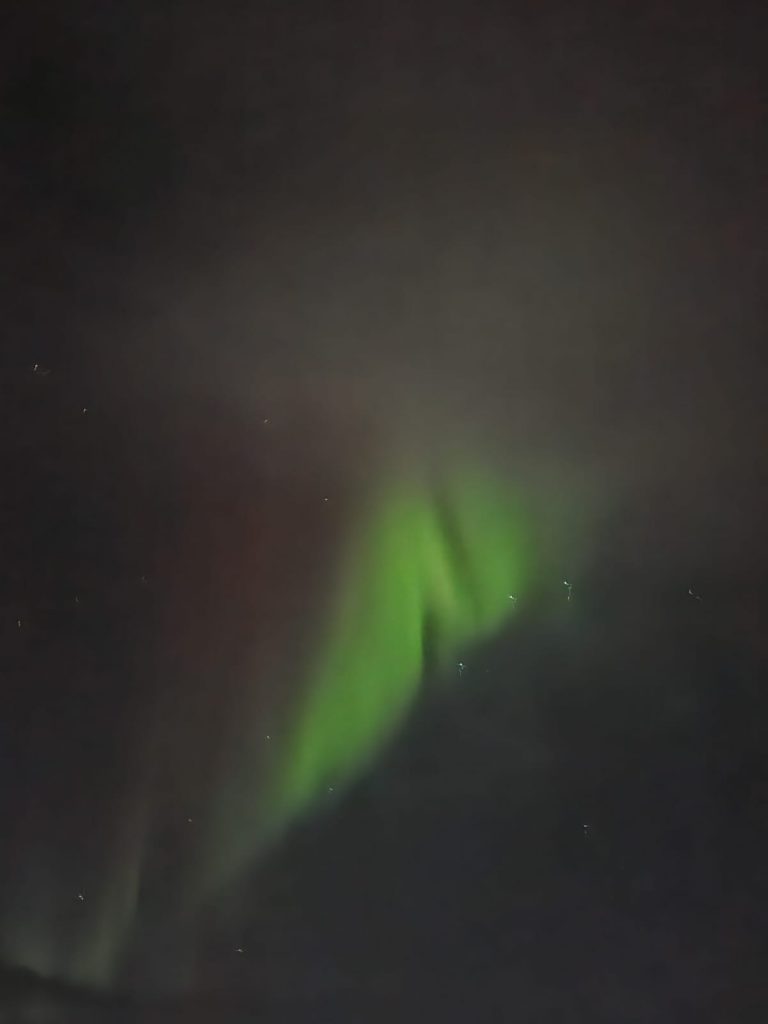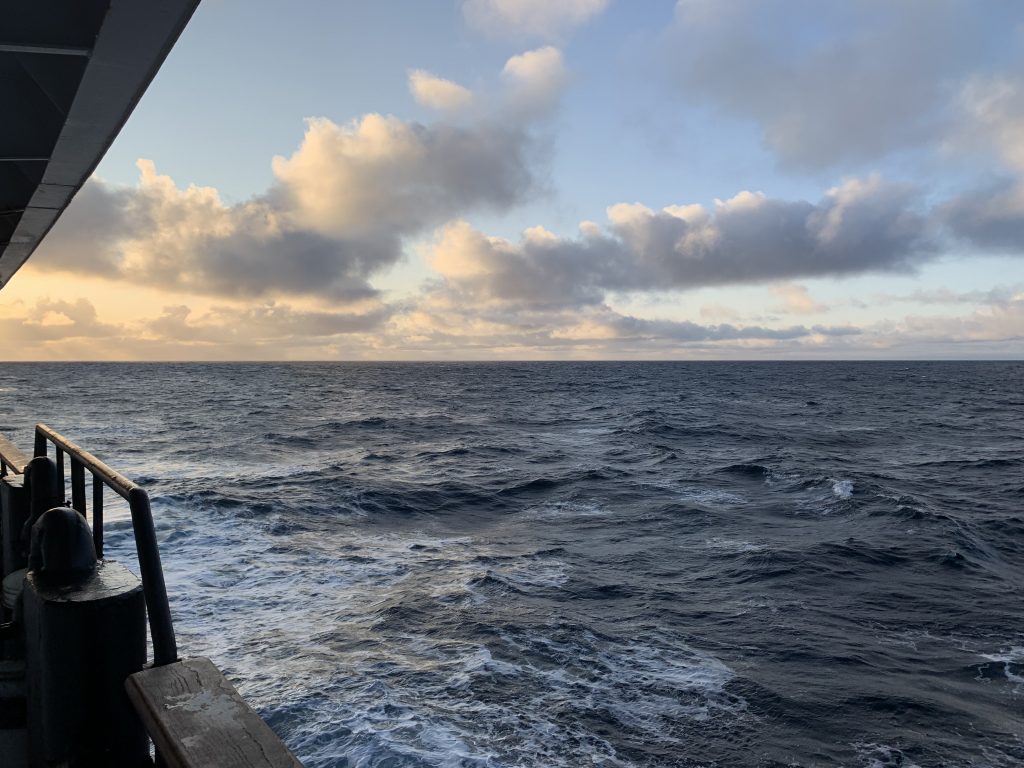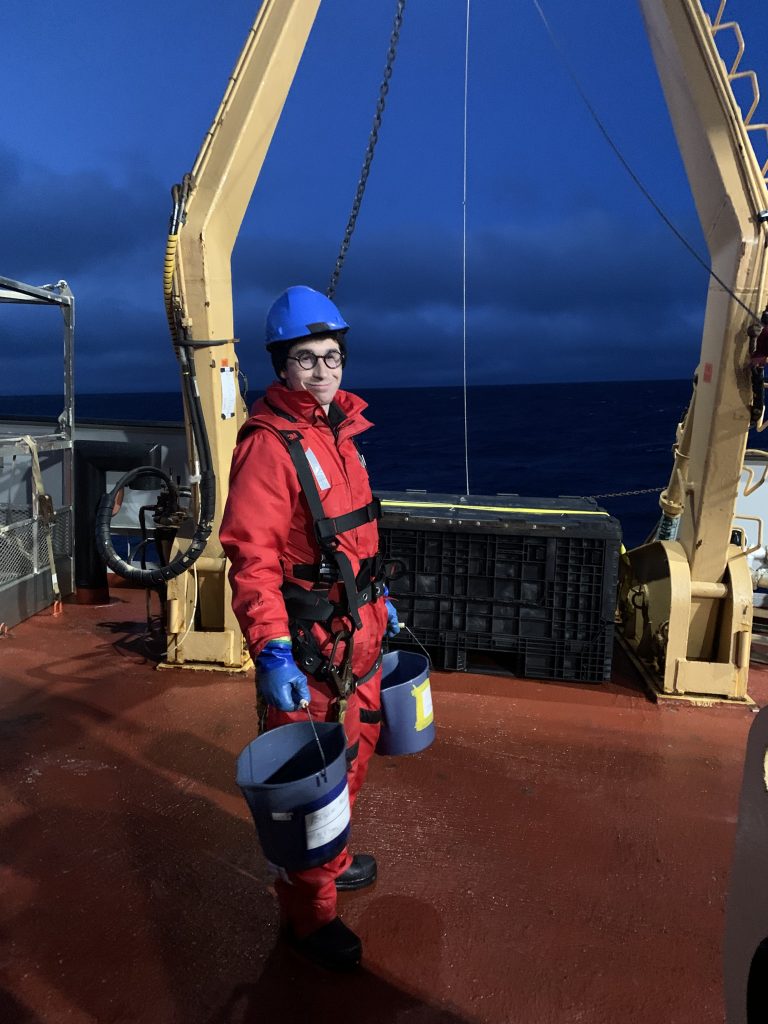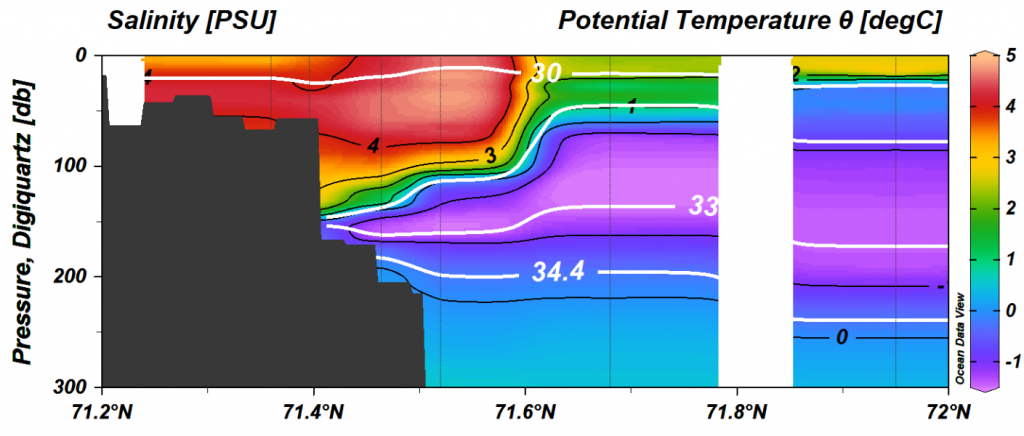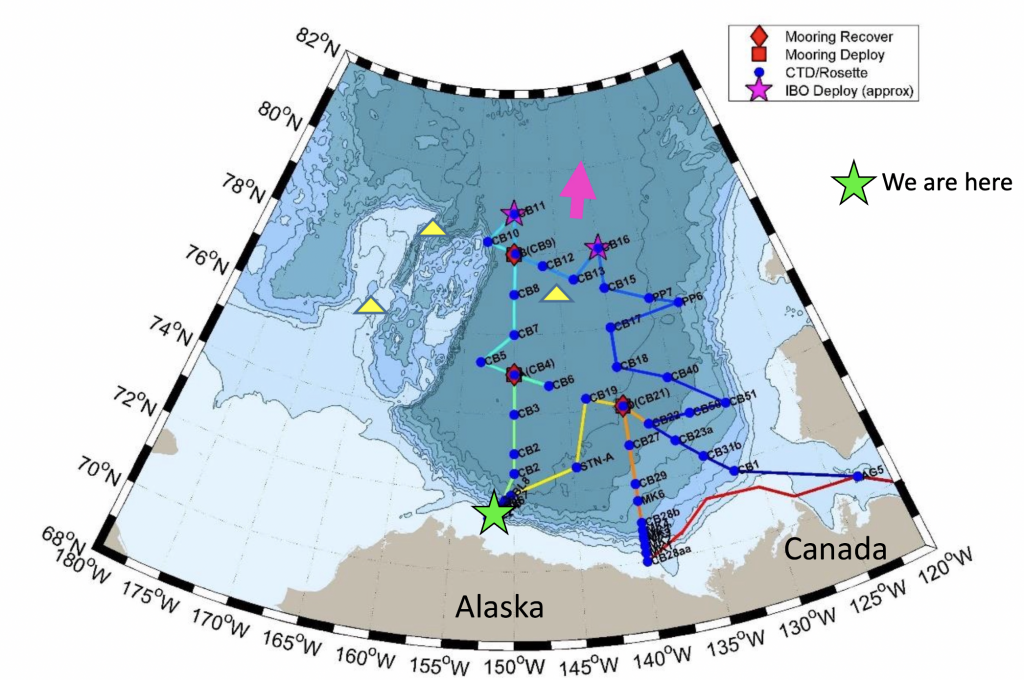Dispatch 20: CTD, Bongos, Sample, Repeat!
Ashley Arroyo
October 4, 2023
Dispatch 20: CTD, Bongos, Sample, Repeat!
Late last night around 9:30 pm, we arrived at the first station of an array of CTD rosette/bongo stations known as the “Barrow Line.” This line of stations runs across the continental slope, close to Utqiagvik (formerly known as Barrow), Alaska. The depths of the casts ranged from about 3000 meters to 75 meters at our closest point to the Alaskan coast. For the past weeks in the center of the basin, our rosette casts have been around 4000 meters deep, so the casts on the Barrow Line were much shallower and quicker than we had been used to. Although the casts are shallower and take less time to complete, the stations on the Barrow Line are much closer together (about 5 to 12 nautical miles apart compared to the 60-nautical-mile spacing of the stations in the central basin). This means less time than normal in between stations, so the watch-standers are extra busy! For the stations on the Barrow Line, we arrived at the next station before finishing sampling the rosette from the last station. So, as soon as the rosette was finished being sampled, it went right back in the water for the next cast! There were also bongo nets deployed at most of the stations. Since we arrived on the Barrow Line late at night, the night shift did the heavy lifting (they were rock stars!). During a short time in between two of the stations, they even got a glimpse of the Northern Lights (see Photo 1), which must have been a nice reward!
Although it’s a lot of work, it is important that the shelf regions are well sampled because of their physical and biological significance. The coastal regions are biological hotspots of photosynthesis/primary production. This is because there is a large supply of nutrients (which allow for photosynthesis) coming from Arctic rivers (e.g., the Makenzie and Yukon Rivers), and from vertical ocean mixing. The data collected from the bongo nets (See dispatch 19) deployed along the Barrow Line help us to understand the different species that make up the ecosystems on the shelf. The shelf regions are also important regions for the physical Arctic environment. In addition to supplying nutrients, Arctic rivers also serve as a significant freshwater flux into the Beaufort Gyre. We physical oceanographers are interested in understanding how freshwater content is changing due to climate change, and intensive sampling of this region will aid us in doing so. The data collected in the boundary currents of these coastal regions helps us to understand how waters flow between the margins of the Arctic Ocean and its deep central basins.
Now that the sampling on the Barrow Line has concluded, we are steaming to one more CTD station before we recover BGOS mooring D on Thursday! Stay tuned for more updates.
